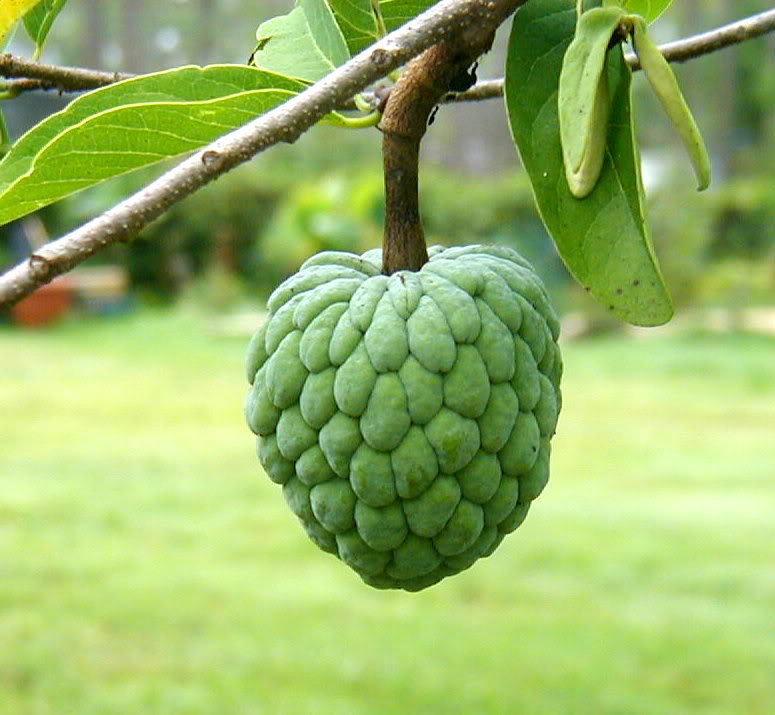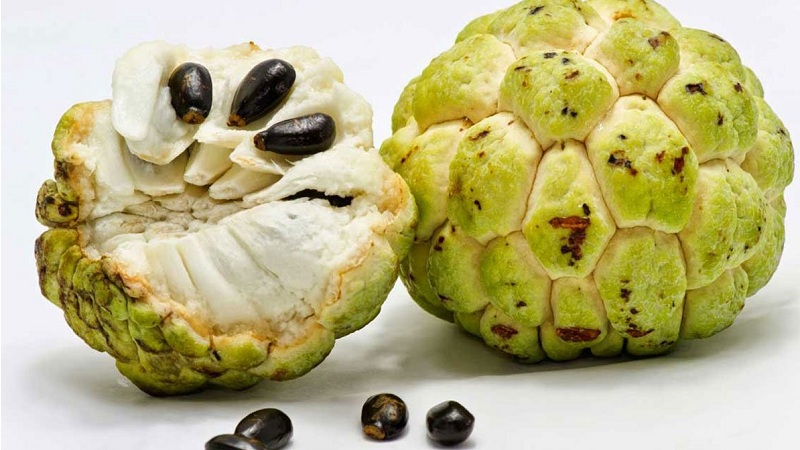Have you ever heard of, seen, eaten or used sugar apple? If yes, what spectacular things about this fruit do you actually know about? If no, just relax and read through this article.
Sugar apple, also known as sweetsop, is the edible fruit of Annona squamosa, a small, well-branched shrub native to the tropical regions of South America and West Indies. Its high Vitamin and mineral contents, along with the unique sweet taste, make it highly popular, especially in the tropics.
Where Did Sugar Apple Come From?
Its exact origin is unknown but today it is commonly cultivated in the tropical areas of Central and South America, such as southern Mexico, in the West Indies, the Bahamas, and Bermuda, Guyana, and occasionally in the south of Florida. It was grown in Indonesia early in the seventeenth century and it has been widely adopted in southern China, Queensland (Australia), Polynesia, Hawaii, tropical Africa, Egypt, and the lowlands of Palestine.
Description Of Sugar Apple

Green Sugar Apple
Sugar Apple may be round, ovoid or conical in shape, being 6-10 cm in length; 5-10 cm in diameter and 100 g to 240g in weight. Its color may be pale green, grayish green or bluish green while certain varieties also have shades of dark pink.
The exterior of the fruit is characterized by a thick, hard outer layer (rind) as well as knobby segments, which get separated on ripening, exposing the inner part. The interior has a creamy-white or light yellow appearance and a sweet, juicy flesh along with a pleasing fragrance, tasting like custard.
Each fruit may have about twenty to forty seeds while some varieties may be seedless. The black or brown colored seeds are oval or cylindrical in shape.
Nutritional Value Of Sugar Apple
Sugar apple is an excellent source of essential minerals and vitamins which are needed for the healthy functioning of our bodies and these include; carbohydrates, dietary fiber, protein, thiamine (B1), zinc, riboflavin (B2), potassium, niacin (B3), phosphorus, pantothenic acid (B5), manganese, calcium, vitamin B6, folate (B9), vitamin C, iron and magnesium.
Here Are 9 Incredible Health Benefits Of Sugar Apple
-

Sugar Apples on the Tree
For diabetes – Dietary fiber plays a significant role in slowing down the absorption of sugar in our body, also lowering the risk of type 2 diabetes. In fact, studies show that we need a total intake of 25 to 30 grams of this carbohydrate on a daily basis. Two sugar apples included in your diet will help in meeting close to half of your daily value of dietary fibers.
- Effects on asthma – It has several valuable vitamins and minerals in it that are helpful in relieving an asthma attack. While Vitamin B6 minimizes the chances of the bronchial tubes to be inflamed, Vitamin C helps to lower the histamine levels thus reducing inflammation and wheezing. Magnesium, on the other hand, helps in relaxing the muscle cells.
- Blood pressure management – Potassium helps in lowering blood pressure by balancing the adverse effects of salt in our body. The recommended value of potassium every day is 4700 milligrams where this fruit contains 5% of the daily value. Eating this fruit daily along with other foods rich in potassium as well as maintaining a healthy lifestyle may help in keeping your blood pressure under control.
- Cholesterol – Vitamin B3 or niacin plays an important role in increasing the levels of good cholesterol (HDL) by 15-35% while reducing triglycerides and LDL-cholesterol levels by 20-50% and 10-20% respectively. Sugar apples provide you 6% of the daily value of Niacin. However, if you are already on medications for cholesterol, refrain from eating a lot of cholesterol-controlling foods as they may interfere with the functioning of the medicines.
- Strong bones – Sugar apple contains 2% and 6% of the daily value of calcium and magnesium respectively, both of which are essential for strengthening and maintaining your bone health, lessening chances of osteoporosis and other bone-related problems.
- Heart health – It belongs to the group of foods used to maintain a healthy heart. It contains 15% of the Vitamin B6 which, along with Vitamin B9 and B12 helps in controlling the homocysteine (an amino acid) levels in our blood thus lessening the possibilities of stroke or coronary heart disease.
- For thyroid – Copper helps to stimulate the thyroid, also protecting our body from excessive thyroxine in the blood. As sugar apple contains a significant amount of copper, it can be regarded as one of the foods to be eaten for controlling thyroid.
- Good for the eyes – The antioxidant properties of Vitamin A help in protecting the retina and cornea cells from free radicals, thus contributing to a better eyesight. While incorporating Vitamin A rich foods in your diet, you may also consider adding this fruit
- Better digestion – The presence of copper and dietary fibers in the fruit aids in proper digestion relieves constipation as well as regularizes bowel movements.
Precautions:
- Seeds are toxic.
- Consume it in moderate amounts.
- Allergic people should avoid it.
Interesting Facts About Sugar Apple
- In 1955, the Seedless Cuban sugar apple was introduced in Cuba, and later another seedless variety was seen in Brazil though they were said to be of an inferior type in comparison to the seeded fruits.
- Indian horticulturists have cultivated ten different sugar apple varieties, some of them being crimson, red, red-speckled and balangar.
Traditional And Medicinal Uses Of Sugar Apple
- The infusion of the bark of the sugar apple tree is used as a tonic for controlling diarrhea and dysentery because of its astringent properties.
- The unripe fruit is useful for treating loose stool and indigestion as it contains tannins.
- The decoction of the sugar apple leaves is either taken individually or mixed with those of other plants and used either as an emmenagogue, a febrifuge or as a tonic for curing cold and digestion problems.
- A paste of the leaves is applied topically on ulcers and tumors due to its anti-ulcer properties.
- The extract of the leaves are used in herbal baths to provide relieve from arthritis or rheumatism.
- Crushed sugar apple leaves are sniffed to help a person overcome a fainting spell, feeling of nausea or hysteria.
- The leaves help in relieving headaches when tied around the head for some time.
- Seeds are used to treat head lice.
- Apply oil extracted from leaves to head for sleeplessness.
- In Philippines, leaves are applied as poultice in case of dyspepsia in children.
- In Philippines, juice of unripe fruit is applied to infected insect bites.
About Sugar Apple
This incredible fruit is cultivated in tropical areas of Central and South America (Guyana). The fruit is available at various supermarkets across Guyana and is also grown in many home gardens. It has a unique sweet taste and is high in vitamins and minerals.
Article References:
- https://en.wikipedia.org/wiki/Sugar-apple
- https://www.hort.purdue.edu/newcrop/morton/sugar_apple.html
- https://www.onlyfoods.net/sugar-apple.html
- https://www.healthbenefitstimes.com/sugar-apple/







